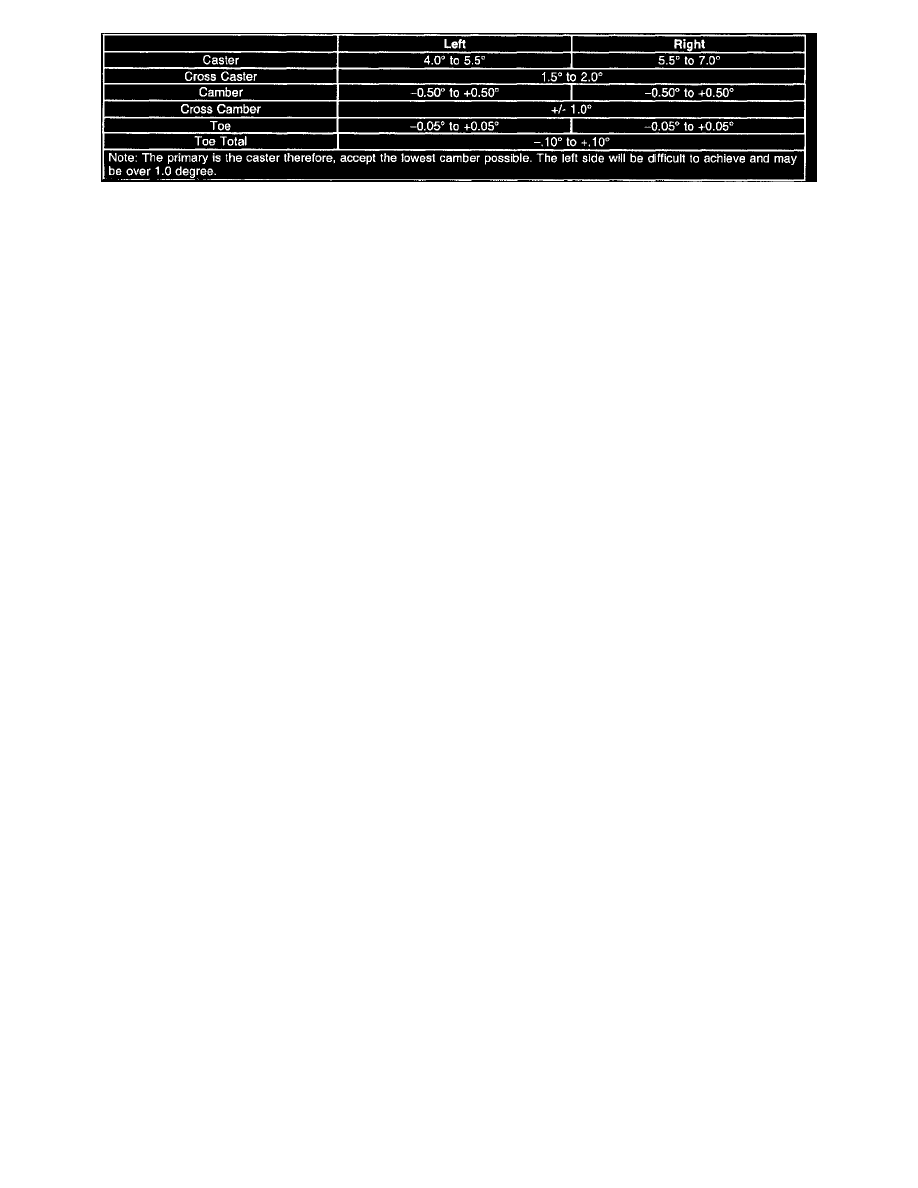Astro Van L AWD V6-262 4.3L VIN Z (1994)

Alignment Specifications
C). ALIGNMENT
1. Loosen the lower control arm bolts, ensuring that the arms are free.
2. Adjust the vehicle trim "Z" height, one side at a time in small 1/2 turn increments, to 136-140 mm (5.375-5.5 in). Maintain the left front higher
than the right. The reason for this is that the left front side is heavier than the right, and when the driver is added the left settles more.
Important: Leave the camber be whatever it comes out after adjusting caster. Because of the frame configuration, the left front camber will probably
come out over 1 degree positive.
3. Adjust the caster. The objective is to have the highest caster possible. Leave both the rear cams full in and the right front full out in order to try and
obtain a minimum of 5.5 degrees of right caster. Adjust the left caster to be 1.50 to 2.0 degrees less. For severe pulls, try to obtain the 2.0 degrees
cross caster. The best procedure found is to leave the right side as is and adjust the left front cams only, whenever possible. Afterwards, a
secondary adjustment is to adjust the right front.
TIGHTEN
Tighten the cam nuts to 145 N.m (107 lb ft).
4. Adjust the front toe using the specifications.
Important: The trim "Z" height measurement should not exceed 150 mm (5.9 in) or driveline vibration may occur.
5. Verify the vehicle trim "Z" height, keeping within the 136-140 mm (5.375-5.5 in) range.
TIGHTEN
Tighten the lower control arm bolts to 133 N.m (95 lb ft).
6. Perform a caster sweep as another alignment adjustment may be necessary.
7. Lower the vehicle and bounce/rock the vehicle in order to settle it.
8. Perform a final toe set using the specifications.
9. A final sweep for an alignment check may reveal the caster has decreased at the higher trim heights. Do not reset the alignment unless the caster
split has been reduced. The higher trim height will produce lower casters. A greater caster split is better unless the vehicle leads to the left.
10. Road test the vehicle for the brake pull.
11. If the vehicle still pulls to the right, try and increase the cross caster by reducing the left caster.
12. If the vehicle still pulls to the left, reduce the cross caster.
13. If the above procedure fails to successfully reduce/eliminate the pull/lead sufficiently to satisfy the customer, further brake work may be required.
Technical Service Bulletin # 00-03-07-003
Date: 000401
Alignment - Vehicle Pulls/Leads Left or Right
BULLETIN NUMBER:
00-03-07-003
SECTION:
03 - Suspension
DATE:
